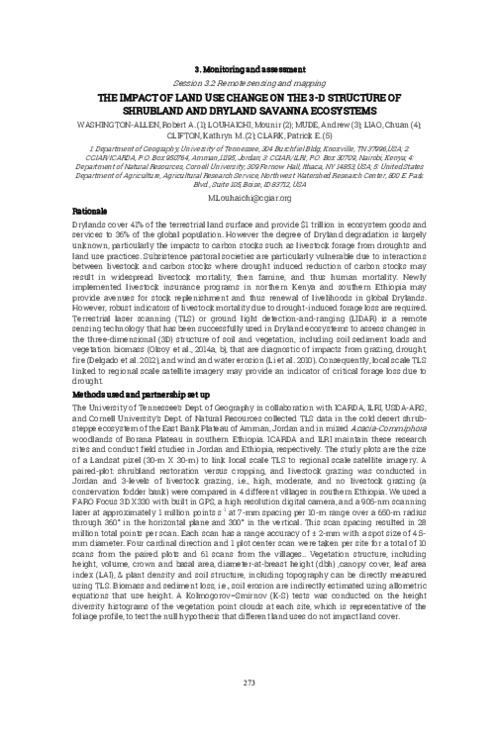The Impact of Land Use Change on the 3-D Structure of Shrubland and Savanna Dryland Ecosystems
Abstract
A terrestrial LiDAR scanner was used to compare the vegetation of two nearby sites with different management regimes. 
Drylands cover 41% of the terrestrial land surface and provide $1 trillion in ecosystem goods and
services to 36% of the global population. However the degree of Dryland degradation is largely
unknown, particularly the impacts to carbon stocks such as livestock forage from droughts and
land use practices. Subsistence pastoral societies are particularly vulnerable due to interactions
between livestock and carbon stocks where drought induced reduction of carbon stocks may
result in widespread livestock mortality, then famine, and thus human mortality. Newly
implemented livestock insurance programs in northern Kenya and southern Ethiopia may
provide avenues for stock replenishment and thus renewal of livelihoods in global Drylands.
However, robust indicators of livestock mortality due to drought-induced forage loss are required.
Terrestrial laser scanning (TLS) or ground light detection-and-ranging (LIDAR) is a remote
sensing technology that has been successfully used in Dryland ecosystems to assess changes in
the three-dimensional (3D) structure of soil and vegetation, including soil sediment loads and
vegetation biomass (Olsoy et al., 2014a, b), that are diagnostic of impacts from grazing, drought,
fire (Delgado et al. 2012), and wind and water erosion (Li et al. 2010). Consequently, local scale TLS
linked to regional scale satellite imagery may provide an indicator of critical forage loss due to
drought

